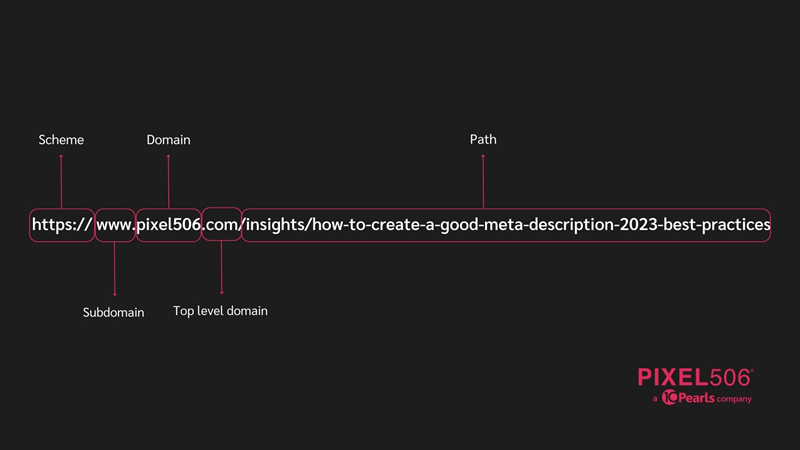
The Benefits of SEO Guideline for Developers
Some website developers don’t take SEO seriously because they lack information or understanding of long-term benefits. Some SEO professionals expect that web developers are knowledgeable about the topic just because they create websites. This is often where the miscommunication starts.
Each party brings valuable skills to the table, and their collaboration is crucial when it comes to creating a website that provides great performance and user experience. From the beginning, communication should be clear, consistent, and transparent. Both parties should be aligned on the best SEO practices to avoid having to redo work that ends up costing time and money.
A guideline provides a clear set of rules and can help to avoid confusion and wasted efforts. Having an SEO guideline makes it easier for team members to collaborate, share knowledge and be more productive.
What SEO Best Practices for Web Development Should Be Taken into Consideration to Create a Guideline?
There are many SEO practices that enhance website rankings in search engines. Although it might be impossible to highlight all practices in your guidelines, here are six practices that we feel should be the norm.
1. Follow Domain Name Syntax Best Practices
Having a strong domain name is crucial for driving both organic and paid traffic to your site. People are more likely to trust brands with easy-to-remember domains than brands without them. There are different SEO best practices for domains, including: make your domain name memorable, avoid dashes and underscores, and use broad keywords when sensible.
What Is a Domain Name Syntax?
A domain name usually has one or more parts, which are known as "labels," that are conventionally concatenated together, separated by dots, and end with a dot (e.g., example.org). The last part of the domain name is known as the TLD or Top Level Domain. For example, the domain name http://www.example.org belongs to the top-level domain org.

What Are the Best Practices for Domain Name Syntax?
- Include Keywords (This must be worked on with the SEO team)
Including keywords in your URL helps users understand what a page is about at a glance. For example, https://ww.example.com/services/software-development tells you that this page is likely to give you information about software development services. If that is what a user is looking for, chances are that they will click this link for more information. In addition, including keywords in URLs is a ranking factor for Google.
- Avoid Dashes or Underscores
When you need to separate words in your URLs, Google recommends that you use hyphens rather than underscores or dash-separated words. Having hyphens makes it easier for Google's search engine to understand the information that your site has and creates consistent results. For you, this means that if you want people to easily be able to access your content, you need to avoid dashes and underscores and opt for hyphens instead.
- Choose Available .Com Names
Today there are many different domain names available, starting with the original .com to new extensions like .hotel, .blog, and .store. We strongly recommend using the .com ones. The .com domains are most familiar to people all around the world and therefore the most powerful.
Why Choose a .Com Domain Name?
- It is more trustworthy and reliable
- It is easier to remember
- It is easier to avoid mistakes when typing
- People are more used to it
- The .com is predicted when typing in many different devices
- Keep It Simple and Short
A simple and short URL is easy to type and easy to remember. A simple URL can help you get faster brand recognition than long ones. For example, www.pixel506.com is easier to remember than www.pixel-506-digital-marketing-agency.com.
- Create a Unique Domain Name
Make sure that your domain name represents your brand and makes it stand out. If there are other websites with similar names you could send your traffic to your competitors.
- Use Subfolders-Directories Instead of Subdomains
In a website, each page adds value to the main domain, it contributes to the authority. When using subdomains, Google sees them as two completely different websites. For SEO purposes, we need the value of all of the pages, so that the authority of the website has the value of every single URL. That is why it is important to use subfolders-directories instead of sub-domains. Otherwise, all of the SEO efforts have to be done separately, treating the main domain and subdomain as 2 different domains.
- 2. Avoid Dynamic URLs
An SEO-friendly URL is one that meets the requirements of both search engines and visitors. SEO-friendly URLs are short, consistent, and memorable. There are 2 types of URLs; static URLs and dynamic URLs. Here we will explain the difference between the two.
- What Are Static URLs?
Static URLs are those that remain the same all the time. We can only modify them by changing their code. For example: https://pixel506.com/services/strategy.
- What Are Dynamic URLs?
Dynamic URLs are generated by a server or a content management system (CMS). They include a lot of symbols, words, or numbers. They are not easy to remember and have a lower click-through rate (CTR.) For example: https://www.example.com/products/page.php?product_id=1&lang=en.
- Why Dynamic URLS?
Google is clear when it comes to URL structure; whether it’s a static or dynamic URL, the search engines will be able to crawl them. However, dynamic URLs are not as search engine friendly, they have a lower CTR, and the chances of people not copying the full URL and ending up on an error 404 page are higher.
Static URLs are easy to remember and copy and paste. This type of URL has a higher CTR which is related to rankings. You can include your keywords and edit the content to include texts and keywords.
- 3. Avoid Multiple Blog Pages
Google has stated in the past that URL structure doesn't make any difference in ranking, however, they have also claimed that the number of clicks does matter. According to Google's Search Advocate, John Mueller, “Google judges the importance of each web page based on how easily it can be reached from the homepage”. Instead of having multiple pages to find older blog posts, it is better to use infinite scrolling for the blog section. Infinite scrolling keeps on feeding visitors new content and encourages them to consume more blog posts.
- 4. Do Not Use HTTP Links to Resources or Internal Pages
Always use HTTPS links where possible, both for security and better SEO. If your web pages use the protected HTTPS protocol, they're secured by a secure protocol. However, if you use an insecure protocol such as HTTP, your data is not encrypted from end to end. Browsers will warn users about security risks, and this causes a bad user experience. Even if there is a 301 redirect, you could be wasting the crawling budget unnecessarily. One of the good SEO practices is to use HTTPS links as much as possible.
- 5. Consider Best Practices for Good Performance and User Experience
Website performance optimization is something that should be a top priority for your business, especially when you have a lot of online competitors. It’s very important to follow the best development practices for a good website performance. This includes image optimization, code optimization, and more. Image optimization is the practice of altering the images you use on your website so they are of high quality without negatively affecting page load times. It’s also about getting your images rank highly on search engines by using relevant alt tags in your images. Code optimization is the process of altering code in such a way that it enhances performance, improves code quality, and uses the least possible memory or disk space. These are just two examples of best development practices for good website performance.
- 6. Avoid Leaving target_blank Attribute
External links are another significant factor in SEO and should be paid close attention to. When using external links, which are links to websites other than yours, you should use trusted sources only. You don't want to link to untrustworthy websites, and you don't want backlinks from them either. Target attributes are used to specify where links will be opened.
- What Is the target_blank in HTML?
The target_blank attribute in HTML opens the links in a new browser tab. With this, the users remain on the website that they are visiting and the link is opened in a new tab.
- Why Is target_blank Not Recommended for External Links?
Using target_blank for external links could put at risk your website due to security issues and could also affect its performance.
- How to Use target_blank in External Links without Risking the Security or Performance of a Website?
To avoid security or performance issues in your website, just make sure to use the rel=”noopener” or rel=”noreferrer” attributes in every external link.
- Conclusion
Website developers and SEO specialists both bring valuable skills to the table. Their collaboration is crucial when it comes to creating a website that provides a great performance and user experience. Unfortunately, there is often miscommunication between these two parties which can lead to time and money wasted. To avoid miscommunication, it is important to educate the development team on the best SEO practices. Using a SEO guideline can reduce or even eliminate common problems. Some SEO best practices for web development that should be included when creating a guideline include follow domain name syntax best practices, avoid dynamic URLs, avoid multiple blog pages and use infinite scrolling instead, always use HTTPs links where possible, consider best practices for good performance and UX, and avoid leaving target_blank attributes.
- About Pixel506
Pixel506 is a full-service digital marketing agency that helps companies improve and maintain their online presence trough innovative and create digital solutions. Our team consists of experienced web developers, designers, copywriters, SEO specialists, and other marketing professionals. We are proud to have a loyal and hardworking team that we rely on in order to offer great service to all our clients. If you believe that your business could benefit from our services, we would love the opportunity to meet with you, learn more about your company, and discuss how we can help.
